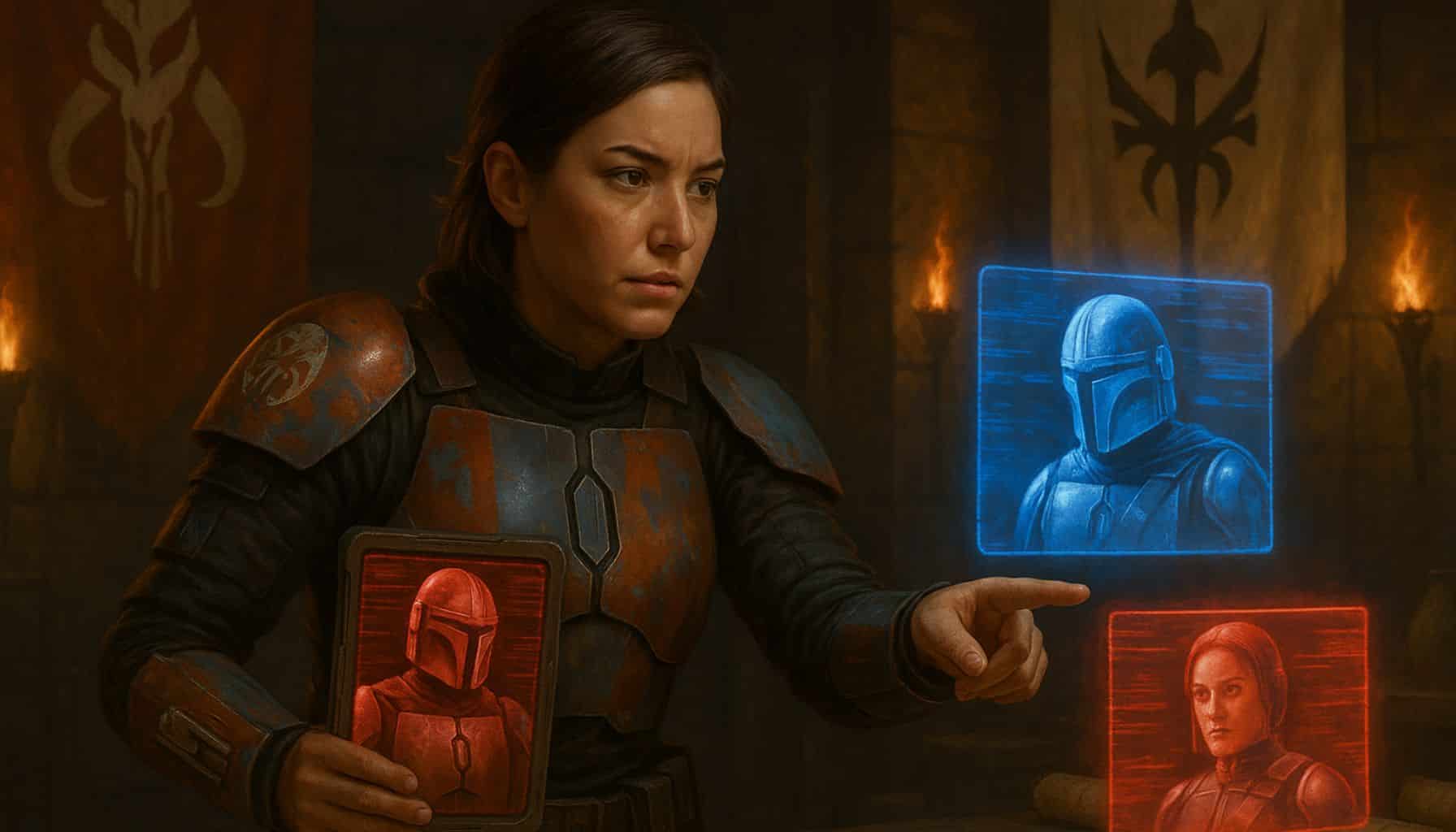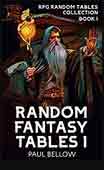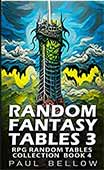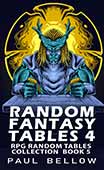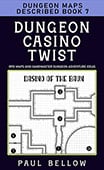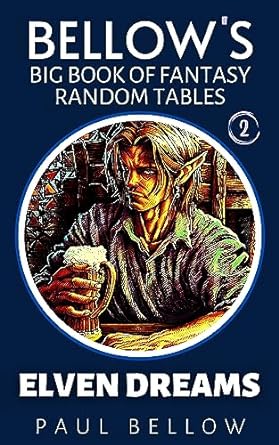A long time ago, in our own very real world, the Star Wars galaxy sprawled across countless planets, battling for coherence while its mythology expanded through hyperspace. When Disney acquired Lucasfilm and declared a streamlined, unified canon, fans believed the tangled web of expanded universe contradictions had finally been blasted to bits. Yet, as the new era’s movies, TV series, comics, novels, and games hyped up and delivered their own interlocking sagas, subtle fractures sprouted beneath the chrome-plated surface. Jedi and scoundrels, senators and Sith. Each added their unique flavor, but also their own spin on events, sometimes at odds with each other, like rival podracers jostling for dominance.
Complexity breeds contradiction. The very ambition that makes Star Wars a living tapestry ensures that, somewhere, a crucial detail slips through the blast doors. Plot points shift in transmission. A comic may burn a relic; a streaming show might pluck it from digital ashes. One film’s retcon becomes another’s legacy. The line between what “really happened” and what simply serves the story blurs into the galactic dusk. With hundreds of creators weaving at lightspeed, mistakes and quirks are inevitable if not, perhaps, entirely accidental.
In this article, forget the urge to point fingers or wield the canon blaster like an inquisitor sniffing out heresy. Instead, we’ll offer understanding, and yes, a bit of laughter. Because for all its mythic grandeur, Star Wars has always known the value of not taking itself too seriously. Nine glaring, ridiculous, or quietly amusing canon contradictions will come under scrutiny, introducing each with context and then shifting into speculation, playful theorizing, and the reminder that entertainment trumps orthodoxy. We’ll clarify which media “rule” the hierarchy, chuckle at the chaos, and just maybe spot creative solutions where others see only paradox.
This adventure aims to serve both the casual Star Wars viewer who wonders “Wait, didn’t that blow up?” and the obsessive lore-hound who can quote lines from both the Rebellion’s databanks and the holocrons of legends. If you’ve ever wondered how Yoda’s lightsaber can be destroyed and gifted at the same time, or why Chewbacca’s medal just can’t stay lost, you’re in the right hyperspace lane. Along the way, we’ll dive deep into the hierarchies, retcons, and behind-the-scenes decisions that shape the ever-evolving mosaic of the galaxy far, far away.
Throughout, understand this isn’t a catalogue of failure, but a testament to living myth. From the Senate chamber’s polished floors to the dusty alleys of Jakku, storytelling remains a living force; untamed, vibrant, stubbornly resistant to spreadsheets. If contradictions crop up, they’re the byproduct of creative possibility. Let’s revel in the mess, find the logic in the silliness, and, as the twin suns set, remember that Star Wars is about wonder, not perfection.
So holster your continuity blasters and pull up a seat in the Mos Eisley cantina. We’re about to dissect the greatest slip-ups in Disney-era canon, grin at the madness, and celebrate the living, breathing chaos at the core of Star Wars storytelling.
Try my AI Tabletop RPG generators...and an extensive library of content!
- Yoda’s Lightsaber (The Book of Boba Fett vs. Darth Vader Comic)
- Vader’s Knowledge of Leia’s Actions (A New Hope vs. Rogue One)
- Han Solo’s Gold Dice (The Force Awakens Visual Dictionary vs. Solo: A Star Wars Story)
- Kanan Jarrus’ Order 66 Escape (Star Wars Rebels Comic vs. The Bad Batch)
- Chewbacca’s Medal (The Rise of Skywalker vs. Star Wars Comics)
- Snoke’s Backstory (The Force Awakens Novelization vs. Actual Role)
- Rey and Poe’s Meeting (The Force Awakens Novelization vs. The Last Jedi)
- Luke’s X-Wing (The Last Jedi vs. The Rise of Skywalker)
- Death Star Wreckage (The Rise of Skywalker vs. Star Wars Battlefront II)
- Canon Clarification: Movies Trump Expanded Media
Yoda’s Lightsaber (The Book of Boba Fett vs. Darth Vader Comic)
Out in the rimward wilds of canon, things rarely stand still. Enter the curious saga of Yoda’s lightsaber, a weapon that, if the comics and streaming screens are to be believed, seems to exist in two timelines at once. In Marvel’s “Darth Vader” comic series, Mas Amedda hoists Yoda’s lightsaber before a jeering Imperial crowd, hurling it into a furnace in a fit of theatrical spite. The blade hisses into oblivion, presumably erased from history by Imperial decree, its ashes scattered like so many lost Jedi dreams.
But then, flipping channels on a gray morning, audiences discovered The Book of Boba Fett’s unexpected gift: Luke Skywalker, serene as a tranquil pond, offers Grogu a choice between Mandalorian chainmail and, incredibly, Yoda’s lightsaber. Gleaming, compact, unmistakable. Fans’ jaws dropped faster than a malfunctioning blast door. Hadn’t that hilt been melted down for propaganda? Had the comics led us on a wild bantha chase?
Symbolically, Yoda’s lightsaber isn’t mere scrap metal. Legends orbit around it, echoing his wisdom, age, and mischievous power. In narrative terms, it’s a beacon, a piece of legacy bridging the Jedi of old and the uncertain new. To see it destroyed marked the Empire’s triumph; to see it reappear on Luke’s palm signals hope and continuity. Such icons become more than just props. They graft meaning onto every new generation of storytellers.
Questions began to swirl across forums and subreddits like a swarm of angry mynocks. Had Luke simply recovered the weapon from the very ashes the Empire claimed? Was the comic incorrect? Or, more likely, does live-action trump the illustrated narrative? In interviews, comic author Charles Soule weighed in, acknowledging that The Book of Boba Fett’s live-action representation “overrides” the comic, hinting that Yoda may have fashioned more than one lightsaber, or that Palpatine’s destruction was, characteristically, a show for the masses. The hierarchy stood clear: when rubber meets the holoprojector, what’s filmed stands above what’s inked.
⚔️ Fantasy RPG Random Tables Books
Make life as a Gamemaster easier…
If you play Dungeons & Dragons, Pathfinder, or other fantasy RPGs, this
RPG random tables series
is packed with encounters, NPCs, treasure, and more. Available in eBook or print—either way, you’ll have a wealth of adventure ideas at your fingertips.
Theories for Yoda’s Lightsaber’s Survival
- A secret Jedi portal allowed Yoda to stash backup weapons across the galaxy, like a medieval knight with hidden daggers.
- Yoda foresaw the need for decoys, crafting identical lightsabers to confound Sith busybodies.
- Mas Amedda, eager to please his master, chucked a common training saber into the pyre, believing no one would notice.
- Luke, master of scavenging, pieced together the hilt from Yoda’s spare parts and some lightsaber schematics found beneath Dagobah’s mud.
- The “destroyed” lightsaber was a cunning Force illusion, intended to mislead Imperial observers and future comic writers alike.
- Palpatine, the galaxy’s grandest showman, demanded theatrical props for executions, substituting real sabers for fakes without a care.
- Yoda, trickster at heart, left behind a holographic replica just to troll Imperial recordkeepers for centuries to come.
- A time loop, accidentally triggered by meddling Loth-wolves, placed the same saber in two realities at once, a paradox worthy of the World Between Worlds.
- Grogu, drawing from infantile Force memory, manifested the saber into Luke’s hand as an artifact of proto-Jedi wish fulfillment.
Not every saga needs a tidy resolution. In the end, live-action canon reigns supreme. The Book of Boba Fett, like a seasoned sabacc cheater, pulls the winning hand, gently nudging comics into the “inspired by” category. No need for retcon outrage or midnight rants. Sometimes, legacy trumps literalism, and the best stories choose emotional truth over historical fuss.
Besides, Star Wars thrives on the myth of the unexpected return. A missing saber here, a surprise holo there. These only enrich the tapestry. No single contradiction will topple the saga. Instead, like Yoda’s ever-present mischief, they invite us to imagine, speculate, and laugh at the wild, rolling river of galactic storytelling.
Vader’s Knowledge of Leia’s Actions (A New Hope vs. Rogue One)
Between the battered corridors of the Tantive IV and the heart-pounding escape at the close of Rogue One, a small but conspicuous inconsistency lingers like carbon scoring on a pristine hull. In A New Hope, Vader storms aboard, voice smoldering with Imperial menace, and accuses Leia of receiving “transmissions” beamed to her ship by rebel spies. Yet Rogue One’s harrowing climax gleefully jettisons any pretense of a digital uplink: dramatic handoffs, frenzied dashes, and a physical data disc passed to Leia’s outstretched hands under fire. No transmissions. No signals sent through the ether. Only gravity, panic, courage, and a very manual delivery system.
Vader’s accusation, spoken with the theatrical authority of James Earl Jones, lands heavy. Yet its specifics have haunted detail-obsessed fans since 2016. The moments do not fit together precisely; Vader’s complaint hinges on a digital transfer, while Rogue One’s finale is rooted in sweat and grit, in desperate hands clasping luminous hope. Were we meant to retcon the film’s original dialogue, or accept that the story shifted, upgraded for dramatic modern sensibilities?
This apparent blip, though, wears a thousand masks. Vader, for all his technological terror, has reasons to play coy. Perhaps he’s bluffing, projecting a veneer of certainty meant to rattle Leia, rather than admitting to a frantic search for lost data tapes. Or maybe Imperial Intelligence, in the chaos, misreported how the plans were “transmitted,” and Vader, relentless but not infallible, simply repeated bad intelligence. Star Wars, after all, is a story of perspective, and perspective is often shaped by lies, intimidation, or simple bureaucratic confusion.
Rogue One’s feverish reimagining retcons A New Hope’s implied scenario for maximal tension. In the grand calculus of canon, the newer film’s events override the original’s dialogue, with the benefit of hindsight and buckets of CGI. The narrative’s goal remains the same, to connect a stolen set of blueprints to the underdog Rebellion, but the details now shimmer with contradiction.
Theories Explaining Vader’s “Transmission” Claim
- Vader, still adjusting to his new respirator settings, simply misspoke in the heat of the moment.
- Imperial bureaucrats filed the “physical handoff” under “electronic transmission” just to simplify paperwork.
- Vader, master of psychological warfare, deliberately confused Leia to watch for signs of panic, knowing Imperial agents were listening.
- The Empire’s internal newsletter summarized all rebel activities as “transmissions” to avoid technical explanations.
- Leia swapped stories during interrogation, improvising frantically, prompting Vader to pick the wrong one.
- Vader, notorious for misremembering events involving family members, filed the whole ordeal under “miscellaneous” in his cybernetic brain.
Canon bends, gracefully if not always elegantly, to the demands of the big screen. Rogue One, as a modern production, sets the visual and narrative precedent. The dialogue in A New Hope, while iconic, yields to the visceral impact of a close-quarters escape. We do not watch Star Wars for courtroom-grade transcript accuracy but for grand spectacle, mythic resonance, and the enduring shock of hope against overwhelming power.
Ultimately, this minor blip reflects the evolution of storytelling. As canon stretches across decades, dialogue becomes flexible; intent trumps literalism. Vader’s line, imposing and legendary, remains, but it now serves the drama, not the script’s logistics. The audience, meanwhile, rides the storm, enjoying the contradictions that keep the galaxy perpetually in motion.
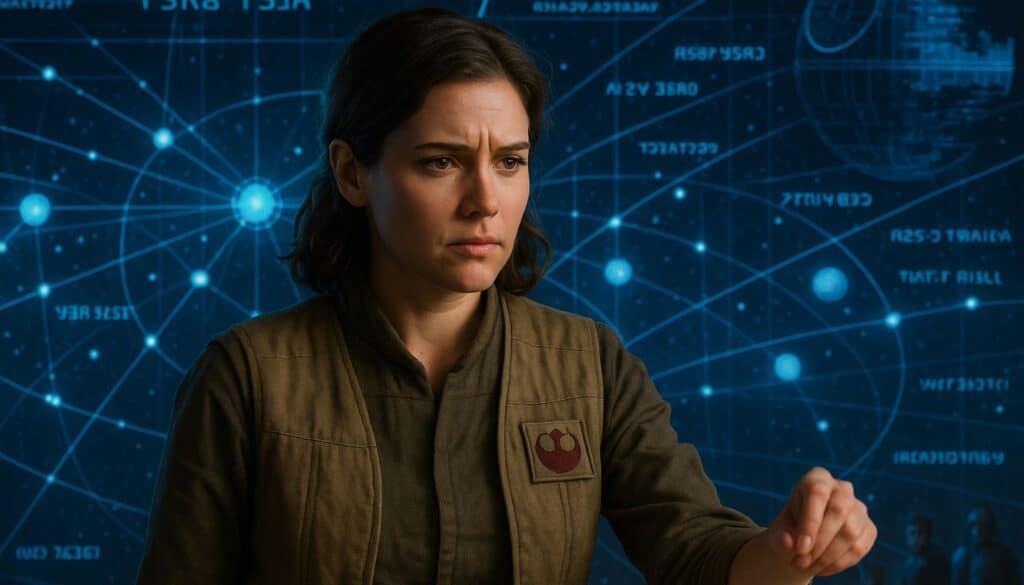
Han Solo’s Gold Dice (The Force Awakens Visual Dictionary vs. Solo: A Star Wars Story)
Among the Falcon’s dangling wires and battered consoles, Han Solo’s glittering gold dice swing gently; a pair of charms as mysterious as Han’s past. The Force Awakens Visual Dictionary, penned before the full story of Solo hit the screen, claims Han used these dice to win the Millennium Falcon from Lando in a legendary game of chance. The implication: the dice decided his fate, crowning him as the scoundrel king of the galaxy’s most famous ship.
Fast forward or rather, backtrack, to Solo: A Star Wars Story. Here, the pivotal moment unfolds not with dice, but through the ruthless dealing of Sabacc cards and Lando’s less-than-honest sleight of hand. Han’s triumph comes from cunning and quick wits, not from tossing bones across a sabacc table. The dice, while omnipresent, play no role in the outcome. Fans, their sense of canon quivering, asked: which story was true?
⚔️ Fantasy RPG Random Tables Books
Make life as a Gamemaster easier…
If you play Dungeons & Dragons, Pathfinder, or other fantasy RPGs, this
RPG random tables series
is packed with encounters, NPCs, treasure, and more. Available in eBook or print—either way, you’ll have a wealth of adventure ideas at your fingertips.
The dice themselves, in the language of prop and symbol, have become totems; emblems of luck, fate, and Han’s irrepressible charm. Across films and scenes, they’re glimpsed in cockpits, clutched by friends, even presented as tokens of memory. The Visual Dictionary, though thorough, reflects concepts and drafts that were later abandoned or reimagined. Movies reshape these artifacts, rendering supplementary materials as creative but non-binding footnotes. Sabacc, not dice, determines Han’s destiny.
A visual’s dictionary’s detail may sparkle, but it cannot override the cinematic reality. Fans can delight in headcanon, imagining dice as lucky charms Han brought to every game, or as keepsakes from an earlier, less consequential wager. The dice’s myth grows with every reinterpretation, untethered from a fixed backstory.
Fan Theories On the Dice’s Role in Han’s Falcon Win
- The dice were Han’s lucky rabbits’ foot, present at every game, but never the deciding factor.
- Lando, sensing the dice’s sentimental value, offered them as a consolation prize when he lost the Falcon.
- Han used the dice to bluff at the sabacc table, dazzling opponents and distracting Lando long enough to cheat.
- The dice win the Falcon in an alternate universe where cards were outlawed and gambling meant rolling, not drawing.
- Han inherited the dice from a lost bet against Chewbacca, who still claims they’re rightfully his.
- The dice, imbued with a sliver of the Force, subtly nudged the cards in Han’s favor, making the victory “dice-adjacent.”
- They’re family heirlooms from Corellia, Han only pretends the Falcon was won by dice to impress easily amused allies.
- After winning, Han bolted the dice to the Falcon’s cockpit to enshrine his luck, regardless of their actual role.
Canon, like Han’s luck, is elastic. The dice don’t need to determine the outcome. No, they resonate as symbols of fortune, risk, and memory. Movies, not manuals, call the shots. If a contradiction emerges, it enhances the mystery. Han would likely smirk, spin another tale, and let the dice fall where they may.
Symbolism, not strict history, commands the story. The dice’s journey continues, gleaming in the Falcon’s cockpit, a not so subtle wink and nod to the audience, a mystery for another day. In the end, canon is forged by the stories that linger, not the footnotes that vanish.
Kanan Jarrus’ Order 66 Escape (Star Wars Rebels Comic vs. The Bad Batch)
On the night Order 66 twisted the galaxy’s fate, Jedi Padawan Caleb Dume ran for his life. Yet, depending on your source, he did so beneath the blood-orange haze of a burning forest, or under a dawn-streaked sky, with clones in white-and-scarlet armor or black-and-red. The Star Wars Rebels comic lays one tale: Caleb, betrayed by his master’s clone troopers, escapes amid panic, colors and dialogue painted with urgency and loss. The Bad Batch animated series, released years later, retells the same escape with vivid new beats. Now, Clone Force 99 sweeps into the fray, the setting shifts, and the choreography changes. Sabers shift hue. Faces change. The moment splinters across timelines.
As fans dissected every frame, the differences piled up. The comic goes for pathos and minimalism, the show piles on dramatic flourishes and new characters. The encounter changes; Caleb’s dialogue with the clones is longer, his response more desperate, and his escape is aided not by luck alone but by the confusion created by the Bad Batch’s intervention. Artistic choices, production priorities, and evolving intentions shape the narrative anew. The old story lingers as memory; the new story cements itself as canon.
In storytelling hierarchies, newer, on-screen content nearly always trumps earlier print. The Bad Batch, stamped and beamed out by Lucasfilm’s creative heads, clearly supersedes the comic. Its changes are not so much mistakes as intentional rewrites, dictated by evolving character arcs and fresh connections. The difference between a myth and a memory often lies in who wields the pen, or the animation software.
Explanations rise from the narrative fog. Perhaps Caleb’s memory, battered by trauma and loss, twisted details in later retellings. Perhaps the comic itself was a stylized version, intended as legend more than fact. Star Wars, ever fond of unreliable narrators, provides ample room for such rationalization.
Try my AI Tabletop RPG generators...and an extensive library of content!
Fan Explanations for the Kanan Escape Discrepancy
- Kanan, always the dramatic storyteller, exaggerated the event to impress his fellow rebels.
- Clones, unreliable witnesses at best, each gave conflicting accounts to post-war historians.
- The trauma of Order 66 muddled Kanan’s memories, causing flashbacks to blur settings and dialogue.
- Artistic license! Comic artists and animators simply saw the Force “from a different point of view.”
- The Force itself shrouded the event in visions, so every account becomes half-truth, half-legend.
- Grand Army recordkeepers, pressed for time, summarized multiple events into one neat narrative.
Canon, at its most flexible, accommodates such divergence. The Bad Batch’s animated retelling is the definitive version, visual, new, and woven into current continuity. Comics offer texture and possibility, but canon rails bend toward the immediate and the official. Memory and myth intertwine until only the present matters.
A minor contradiction does not break the saga! Instead, it enriches it. Star Wars rides on waves of nostalgia and innovation. When old stories bend to new, imagine the Force as a river, reshaping the landscape for each new generation. The discrepancy becomes part of the galaxy’s living memory, not a flaw, but a footnote.
Chewbacca’s Medal (The Rise of Skywalker vs. Star Wars Comics)
Chewbacca’s medal: a symbol, a joke, a long-overdue acknowledgment, and, for decades, the galaxy’s most notorious snub. In A New Hope, the Wookiee stands beside his friends at the Yavin medal ceremony, grumbling, towering and utterly medalless while Han and Luke receive the trappings of victory. Comics and behind-the-scenes interviews later patched the gap, claiming Chewie did receive a medal after all, or explaining the omission with various half-baked rationales. Yet, in The Rise of Skywalker, Maz Kanata solemnly presents Chewbacca with a medal, as if finally righting an ancient wrong.
Confusion swelled. Was this Han’s medal, given as a memento? Had Chewie truly never held a medal before? Did the comics lie? For those attuned to the ritual of acknowledgment, Chewbacca’s journey from overlooked hero to belated recipient smacked of narrative wish fulfillment, more than strict continuity.
The Rise of Skywalker’s solution leans on emotional resonance. The medal, inherited from Han, represents loss and memory, not just honor. A symbolic act resonates far beyond any prior comic or novel claim. For the Wookiee, it’s both an end and a beginning; the “fix” to a meme, a wink to fandom, and a powerful, tear-jerking callback.
The medal’s path, like Chewie’s own journey, epitomizes the saga’s complicated relationship with its past. It’s fan service, perhaps, but also a moment of heartfelt closure, unconcerned with reconciling every comic panel, more devoted to the spirit of the story.
Fan Explanations for the Medal Mystery
- Chewbacca originally turned down medals, believing honor mattered more than jewelry.
- He misplaced his first medal during a rowdy post-Yavin celebration on Kashyyyk.
- The medal only fit on humans. Rebel officials simply forgot to order a Wookiee-sized version.
- Chewie’s medal got lost in a Sabacc game against Lando, who still wears it beneath his cape.
- Princess Leia forgot to hand over the medal, distracted by Imperial entanglements.
- Maz Kanata, being Maz, hoarded medals for decades, waiting for the perfect dramatic moment.
The films, with their visual clarity and emotional weight, always supersede. The comics’ versions fade into the mist. What matters isn’t the sequence of metal and ribbons, but the journey, Chewbacca’s steadfast loyalty, finally illuminated by the medal’s gleam.
Fans, ultimately, seek acknowledgment, justice, and a little humor. If Chewbacca laughs loudest, that’s as it should be. The saga’s continuity knits itself anew with every smile, every medallion, every homecoming. Narrative triumphs over accounting.
Snoke’s Backstory (The Force Awakens Novelization vs. Actual Role)
The shadowy figure of Supreme Leader Snoke loomed over the sequel trilogy like a riddle without a punchline. Early novelizations and tie-in materials lavishly detailed his backstory. Snoke, they claimed, watched the rise and fall of the Empire, manipulated from afar, bore ancient wisdom. He presented himself as a survivor, a figure from the shadows whose power came from experience. Yet The Rise of Skywalker detonated that narrative with all the subtlety of a thermal detonator, revealing Snoke as a cloned creation, manipulated by Palpatine from birth, programmed for deception and cosmic mischief.
Legend became misdirection. The books, crafted from evolving scripts and shifting drafts, leaned on mystery and backstory, echoing the saga’s penchant for grandiose villainy. Snoke’s own words may have been lies, or implanted memories, or simply the product of a brain as warped as his body. Palpatine, the ultimate puppeteer, seeded false histories to confound both characters and readers.
The divide between film and novelization yawns wide. Canon hierarchy cedes ground to visual storytelling; what unfolds on screen trumps what’s disclosed in tie-in prose. The novels, creative and free-ranging, often graft complexity onto mysteries that later films solve with simple, visceral reveals. Snoke, once a mystery, now stands as evidence of shadows and manipulation.
The contradiction is not a bug, but a feature: novels layer histories and intentions, but the films snap them shut. In Snoke’s case, the old backstory recedes. Palpatine’s voice drowns out the echo! Seriously!
Humorous Interpretations of Snoke’s Past
- Snoke boasted about witnessing the Empire’s history to inflate his ego before Kylo Ren.
- Palpatine, bored in his cloning vats, programmed a dozen conflicting memories into Snoke’s wrinkled brain.
- Snoke read dusty Imperial histories during nap time, then confused them with lived experience.
- Every clone in Palpatine’s lab gets a new “origin story” uploaded for entertainment value.
- Kylo Ren, keen on dramatic mentorship, rewrote Snoke’s biography in his journal for fun.
- Snoke simply made stuff up whenever the First Order’s interns asked too many questions.
In the layering of canon, flexibility rules. The Force Awakens novelization is a creative springboard, not a Rosetta Stone. The films define the truth, casting old material as flavor, not law.
Canon shifts, but story endures. Snoke, whether clone, phantom, or liar, always served a higher narrative. His contradictions are simply another mask, soon discarded in the face of the saga’s unfolding revelations.
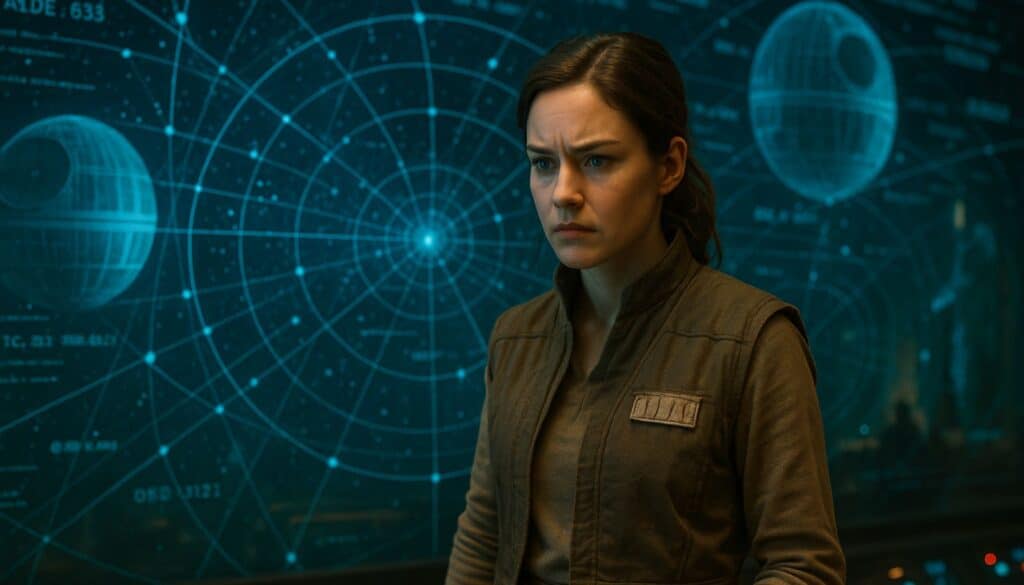
Rey and Poe’s Meeting (The Force Awakens Novelization vs. The Last Jedi)
Somewhere between the crash-landing of the Falcon and the desperate stand on Crait, Rey and Poe Dameron, a scavenger and a flyboy, linked by destiny, finally meet on screen in The Last Jedi. Their introduction, charged with hope and awkward greeting, plays as their first encounter. Yet, in the novelization of The Force Awakens, penned from early drafts and unused scripts, the pair shares a hasty meeting in the Resistance’s medical tents long before this, exchanging names and forging connection.
⚔️ Fantasy RPG Random Tables Books
Make life as a Gamemaster easier…
If you play Dungeons & Dragons, Pathfinder, or other fantasy RPGs, this
RPG random tables series
is packed with encounters, NPCs, treasure, and more. Available in eBook or print—either way, you’ll have a wealth of adventure ideas at your fingertips.
Fans, upon noticing this disconnect, blinked. The scripts had forked; the canon had doubled back on itself. The book’s version, warm and fleeting, suggests a casual encounter lost to editing. The movie, definitive and visual, lays claim to their first introduction as public record. Whose memory holds sway?
The answer lies in the nature of Star Wars’ canon system. Films always trump supplements. Novelizations, often crafted in parallel with evolving scripts, sometimes encode scenes that vanish before final cut. Their details, while evocative, do not supersede cinematic truth. In this case, The Last Jedi’s meeting is their “real” first encounter. The novelization’s early scene remains a ghost, an artifact of the process, not the plot.
Such contradictions sprout like weeds in a garden as rich as Star Wars. Early scripts, eager editors, or even the Force’s own machinations may play a role. Either way, fans are free to enjoy multiple versions or to choose the most satisfying.
Playful Theories for the Rey and Poe Contradiction
- Rey glimpsed Poe in a Force-vision flashback, mistaking it for a full conversation.
- An alternate universe saw them meet on Starkiller Base, then forget.
- The author, working from an outdated script, imagined the meeting while sipping too much blue milk.
- Medical droids swapped out Rey’s memory implant; the first meeting vanished into digital oblivion.
- Poe, forever the flirt, claimed to have met Rey already just to sound cool in front of Finn.
The Last Jedi, as visual canon, holds the upper hand. The books’ scenes, intriguing or discarded, drift into supplementary territory, fuel for fan fiction, not debate.
Canon bends, but story endures. Every meeting, whether on-screen or imagined, adds texture to the myth. If Rey and Poe’s first handshake has multiple timelines, so much the better. Remember, true and honest Star Wars survives on possibility.
Luke’s X-Wing (The Last Jedi vs. The Rise of Skywalker)
Some relics, seemingly destined for the scrapheap, never quite stay broken. In The Last Jedi, Luke Skywalker’s legendary X-wing rests submerged and half-rotted beneath the surface of Ahch-To’s storm-lashed lake; wings detached, engines corroded, hopelessly inoperable. As the old Jedi contemplates exile, his ship fades silently into the gloom, a monument to past glories surrendered. But The Rise of Skywalker, never one to linger on setbacks, catapults Rey into action, raising the very same X-wing from the deep, engines firing, S-foils locked, ready for the last stand.
What of the waterlogged hull, the battered frame, the missing parts? Fans, staring in disbelief, wondered how a craft so far gone could suddenly soar through the blackness, undaunted by decades of rust and neglect. The answer, as so often, lies in narrative convenience and the importance of myth over mechanics.
In Star Wars, the impossible is routine. The X-wing’s resurrection is less a feat of engineering than a callback: a visual echo of Yoda’s triumph on Dagobah, spliced with the urgency of a fleet on the brink. Whether the Force itself helped dry out the engines, or Rey performed a hasty hyperdrive tune-up with porg assistance, the point remains. At the end of the day, story beats logic.
In-universe, plausible explanations abound. Jedi can assemble ships with a flick of the mind; scavengers can work miracles. Out-of-universe, the callback to Luke’s own journey and the symbolic return of hope outweigh the inconvenience of rusted wiring. The X-wing rises because it must. The saga keeps flying with it.
Fan-Imagined Solutions for the X-Wing’s Miraculous Restoration
- Rey, using the Force, called upon a herd of technically gifted porgs to patch the ship overnight.
- Luke, master planner, pre-wired the craft’s electronics to withstand centuries of brine, anticipating future need.
- Secret Jedi self-repair functions engaged after Rey touched the hull; ancient coding, lost to the galaxy.
- Space-grade adhesive, stashed by Luke for emergencies, patched every hull breach after a single application.
- Chewbacca arrived quietly off-screen and spent hours rewiring, then exited before the panning shot.
- The water on Ahch-To possessed rare electrolytes with restorative properties, turning corrosion to conductive crystal.
- Rey harnessed her newfound Skywalker powers to “will” the X-wing back to flight, classic style.
- The ship, like the Falcon, simply thrived on chaos; breakdowns only made it stronger.
The point, though, is never technical accuracy. Narrative momentum, emotional resonance, and visual spectacle push Star Wars forward. The X-wing’s impossible flight encapsulates the saga’s heart: anything is possible, given will and courage.
If continuity creaks, story soars. We return for myth, not manuals. The X-wing, mud and all, flies on.
Death Star Wreckage (The Rise of Skywalker vs. Star Wars Battlefront II)
Out across the angry surf of Kef Bir, chunks of the Death Star’s jagged hull crouch amid roaring waves in The Rise of Skywalker, remnants of vengeance and hubris. Yet players who braved the single-player campaign of Star Wars Battlefront II recall exploring similar wreckage on Endor’s forest moon, months or years after the station’s destruction, the environment lush and the debris building-sized, not continent-crushing. The contradiction leaped out; a planet here, a moon there, massive differences in scope and aftermath.
In one medium, the remnants stand as haunted mountains of steel; in the other, as scattered ruins reclaimed by moss and sunlight. How did the Death Star detritus shift from one location to another? Were there two separate wreck sites, one for filmic drama, the other for interactive exploration? Or did the narrative evolve, superseding prior visions for the sake of new spectacle?
Canon prioritizes the concrete. Films, unable to adjust to video game flexibility, define the “real” state of the galaxy’s landmarks. Battlefront II, brilliant but designed for gameplay, takes creative liberties. Timelines, storytelling needs, and even shifting orbital mechanics can rationalize the discrepancy.
As for how the wreckage changed, options abound. Orbital decay drifting the remains from Endor to Kef Bir, Imperial salvage teams relocating prized tech, or simply narrative necessity demanding new vistas. Take your pick, boss. The galaxy swirls with possibility.
Humorous Explanations for Death Star Wreckage Discrepancy
- Imperial salvage crews, on tight deadlines, dragged chunks of the Death Star from Endor to Kef Bir for insurance fraud.
- Space whales (Purrgil) nudged the remains, bored and looking for excitement.
- Environmentalists moved the wreckage to save the Endor ewok population from radioactive fallout.
- Local fishermen used anti-gravity cranes to chase off overzealous relic hunters.
- Gameplay environments, existing in parallel timelines, don’t count. Players wandered through alternate realities.
- The Death Star, in its last gasp, fired its engines one final time and scattered itself across the system.
- A hyperspace accident flung debris into random orbits each chunk gets a moon of its own.
- The Force, ever mysterious, wanted every storyteller to have their own playground.
In the end, movies dictate what is “real.” Games amuse, but filmic canon dominates. The Death Star’s final resting place lies wherever the story needs it. Sometimes, that’s on the storm-lashed shallows of a remote moon, beneath a sky thick with memory and regret.
Story trumps map. The adventure continues no matter where the remains fall.
Canon Clarification: Movies Trump Expanded Media
Lucasfilm, after decades of spiraling legends, has established a firm hierarchy for continuity: movies and official TV series reign supreme. Below these, comics, novels, and games contribute depth, lore, and speculation, but submit their claims to the iron rule of filmic precedence. If new material contradicts the old, the screen’s vision prevails.
The logic is simple. Visual media reach the widest audience, set expectations, and serve as the bedrock of myth. Supplementary materials enrich and elaborate, but their details are always provisional, subject to revision, reinterpretation, or outright contradiction. This system ensures that storytellers remain free to innovate, shift course, or retcon without endlessly reconciling prior minutiae.
Fans, both seasoned and casual, benefit from this clarity. When contradictions crop up the burden is lightened. Accept the films as reality. Enjoy the rest as embellishment, flavor, or even cheerful misdirection. Canon is a living organism, adaptive and stubborn, forever in flux.
| # | Discrepancy | Media Involved | Canon Resolution | Humorous Fan Rationalizations |
|---|---|---|---|---|
| 1 | Yoda’s Lightsaber | Book of Boba Fett vs. Darth Vader Comic | Live-action trumps comic | Secret backups, prop switch, Force illusions, Palpatine’s theater, etc |
| 2 | Vader & Leia’s “Transmission” | A New Hope vs. Rogue One | Rogue One event takes precedence | Vader flubbed his line, Imperial report error, deliberate bluff, etc |
| 3 | Han’s Gold Dice | Force Awakens Visual Dictionary vs. Solo | Movie depiction wins | Lucky charm, bluff, keepsake, alternate universe dice win, etc |
| 4 | Kanan’s Order 66 Escape | Rebels Comic vs. The Bad Batch | The Bad Batch is the new canon | Trauma memory, unreliable narrator, artist’s view, legend, etc |
| 5 | Chewie’s Medal | Rise of Skywalker vs. Star Wars Comics | Film’s emotional payoff wins | Chewie lost it, never wanted one, Maz hoarded medals, size mismatch |
| 6 | Snoke’s Backstory | Force Awakens Novelization vs. Episode IX | Episode IX clone origin is canon | Implanted memories, boasting, Palpatine’s mischief, false histories |
| 7 | Rey & Poe’s Meeting | Force Awakens Novelization vs. The Last Jedi | Last Jedi on-screen meeting stands | Authorial error, Force vision, medical droid, alternate timeline |
| 8 | Luke’s X-Wing | Last Jedi vs. The Rise of Skywalker | Narrative need justifies “fix” | Jedi repairs, porg mechanics, Chewie’s handiwork, space glue, etc |
| 9 | Death Star Wreckage | Rise of Skywalker vs. Battlefront II | Movies override games | Salvage crews, environmentalists, space whales, parallel timelines |
Star Wars, at its heart, is a living story. Minor errors, contradictions, and retcons are not flaws but natural byproducts of myth-making on a galactic scale. They add texture, inspire debate, and invite fans to invent ever-stranger reconciliations. Perplexity is baked in by design.
Let the details shift. Let canon snarl and untangle by turn. The Force’s true strength lies in imagination, bonding fans across generations and platforms. If a lightsaber can be destroyed and reappear, or a medal bestowed a few decades late, the galaxy grows richer. Celebrate the chaos. Find delight in the quirks. And, always, let the story take flight.
May the narrative be with you, always.

